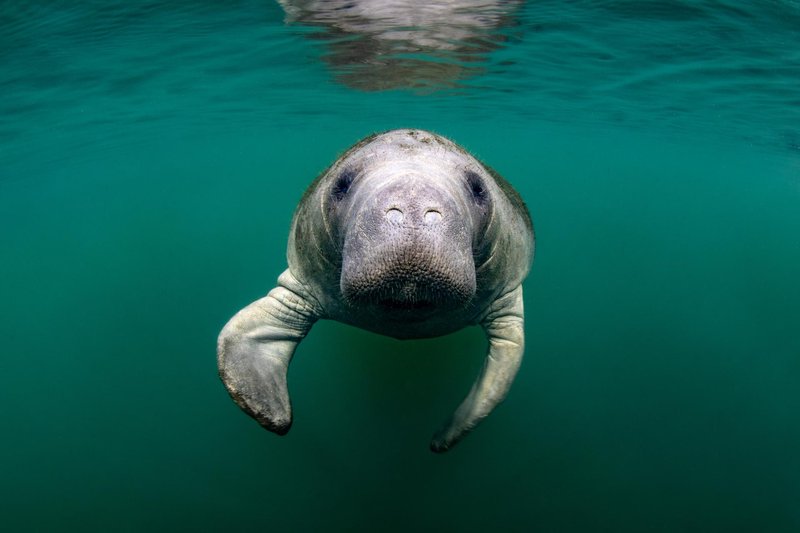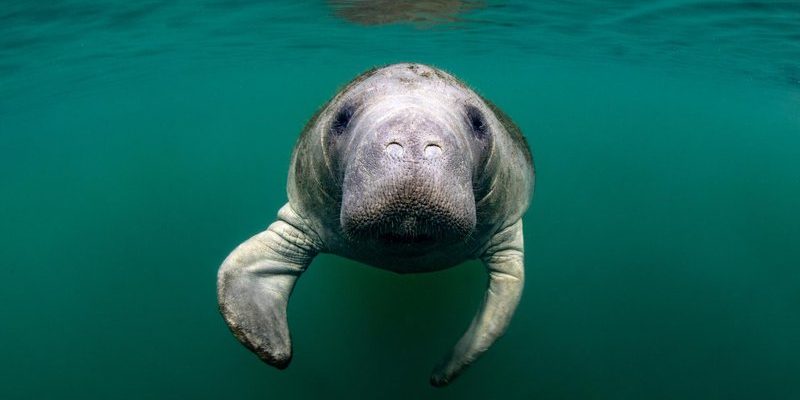
Imagine gliding through warm, shallow waters, surrounded by lush, green vegetation. Suddenly, you spot a friendly creature rising to the surface, its large, round body gleaming in the sunlight. This is a manatee, often affectionately called the “sea cow.” These gentle giants are captivating not just for their size but also for their serene nature and unique way of life. If you’ve ever seen videos of a manatee munching on seagrass, you know how endearing they can be.
Manatees are aquatic mammals that inhabit rivers, lagoons, and coastal areas, primarily in warm waters. While they may appear slow and lumbering, they have a grace that belies their size. With their playful demeanor and endearing features, manatees quickly capture the hearts of those lucky enough to encounter them. Let’s dive deeper into what makes these creatures so special.
Overview of Manatees
Manatees belong to the order Sirenia, which also includes the dugong. They’re large, herbivorous mammals that can grow to about 10 to 13 feet in length and weigh anywhere from 800 to 1,200 pounds. These gentle giants are known for their round faces, paddle-like flippers, and a tail that resembles a large, rounded paddle. Manatees have a thick, grayish skin that often appears wrinkled, and it’s not uncommon to find scars on their bodies from encounters with boats.
There are three species of manatees: the West Indian manatee, the Amazonian manatee, and the African manatee. Each species has adapted to its environment, showcasing unique characteristics. For instance, the Amazonian manatee is smaller and has a more streamlined body than its West Indian cousin, which is the most well-known species. These adaptations allow manatees to thrive in diverse habitats, showcasing their incredible evolutionary journey.
Interesting Facts About Manatees
| Size: | 10 to 13 feet |
| Weight: | 800 to 1,200 pounds |
| Diet: | Herbivorous, primarily eats seagrass and aquatic plants |
| Speed: | Up to 15 mph (but usually moves at about 5 mph) |
| Lifespan: | 50 to 65 years in the wild |
| Habitat: | Coastal waters, rivers, and freshwater springs |
Behavior and Social Structure
Manatees are quite sociable creatures, often found in small groups or pairs, although they can also be seen alone. They communicate through various vocalizations, such as squeaks, whistles, and barks. These sounds help them express themselves and maintain social bonds. Interestingly, manatees don’t have many natural predators, but they face significant threats from human activities, like boat collisions and habitat loss.
You might be surprised to learn that manatees are migratory animals. As the seasons change, they tend to move to warmer waters during the cooler months. This behavior is essential for their survival, as manatees require warm temperatures to thrive. They often gather in natural springs during winter, where the water stays warm, allowing them to stay healthy and active.
Feeding Habits
When it comes to food, manatees are picky eaters. Their primary diet consists of seagrass and other aquatic plants, but they can also munch on algae and certain types of vegetables. They are known for their grazing habits, spending up to seven hours a day eating, consuming around 10 to 15% of their body weight. With those hefty appetites, it’s no wonder they spend so much time near seagrass beds!
Manatees use their sensitive whiskers, called vibrissae, to detect food in the murky waters. Their large, flat teeth are perfectly adapted to grind the plants they consume. One fascinating fact is that manatees can regenerate their teeth throughout their lives, ensuring they always have a good set for their herbivorous diet. Imagine that—a creature that gets a “new set of teeth” whenever it needs them!
Conservation Status
While manatees are gentle giants, they face numerous threats in the wild. Human activities, such as boating, pollution, and habitat destruction, significantly endanger their populations. The West Indian manatee, for instance, is classified as “vulnerable” by the International Union for Conservation of Nature (IUCN). Conservation efforts are crucial to protect these creatures and their habitats.
Various organizations and government agencies are dedicated to the conservation of manatees. These efforts include education about safe boating practices, habitat restoration, and research into their behaviors and populations. You can help too! By spreading awareness and supporting local conservation initiatives, you can contribute to ensuring that future generations will still be able to see these magnificent creatures in the wild.
Frequently Asked Questions
What do manatees eat?
Manatees primarily eat aquatic plants, including seagrass, algae, and certain types of vegetables. They spend a large portion of their day grazing, consuming vast amounts of vegetation to sustain their size. A single manatee can eat 100 pounds of seagrass in a day!
Where do manatees live?
Manatees inhabit warm coastal waters, rivers, and freshwater springs. They prefer shallow areas where seagrass and vegetation are abundant. During colder months, they migrate to warmer waters, often gathering in natural springs where temperatures remain consistent.
How fast can manatees swim?
While manatees are known for their slow, leisurely movements, they can swim up to 15 mph in brief bursts. However, they typically cruise at around 5 mph. Their gentle nature and calm demeanor make them one of the more peaceful creatures you’ll encounter in the water.
How long do manatees live?
In the wild, manatees can live between 50 to 65 years, although some individuals may live even longer. Their long lifespan is a testament to their adaptability in various environments, although their populations are threatened by human activities.
Are manatees endangered?
Manatees, particularly the West Indian manatee, are classified as vulnerable. They face threats from habitat loss, boat strikes, and pollution, making conservation efforts essential to their survival. Protecting their habitats and promoting safe boating practices are crucial steps in safeguarding these gentle giants.
How do manatees communicate?
Manatees communicate using a variety of vocalizations, including squeaks, whistles, and barks. These sounds help them maintain social bonds and express themselves, especially in a group setting. Their communication is vital for their social interactions and connections with one another.
Can manatees hold their breath underwater?
Yes, manatees can hold their breath for about 15 minutes while diving for food. However, they usually resurface every 3 to 5 minutes to breathe. They have to come to the surface to breathe since, as mammals, they cannot extract oxygen from water like fish do.
What are the main threats to manatees?
The primary threats to manatees include habitat destruction, boat collisions, and environmental pollution. As human activities expand, these gentle giants face increasing challenges to their survival. Conservation efforts are crucial to protect their habitats and educate the public about safe practices.
Are manatees social animals?
Yes, manatees are social creatures often seen in small groups or pairs. They communicate through various sounds and display affectionate behaviors towards one another. While they can be solitary, they do enjoy the company of their fellow manatees.
What can I do to help manatees?
You can contribute to manatee conservation by spreading awareness, supporting local organizations focused on protecting their habitats, and practicing safe boating around areas known to have manatees. By being mindful of these gentle giants, you can help ensure that they continue to thrive in our waters.
How are manatees adapted to their aquatic environment?
Manatees have several adaptations that help them thrive in water. Their large, paddle-like flippers aid in swimming, while their thick skin protects them from environmental hazards. Additionally, their ability to eat vast amounts of vegetation supports their herbivorous diet, allowing them to sustain their large bodies.

